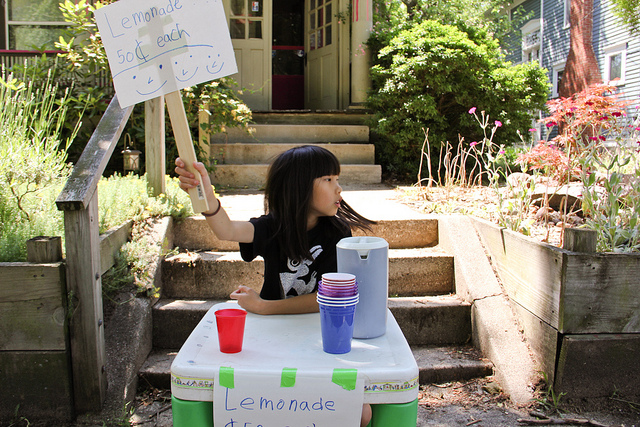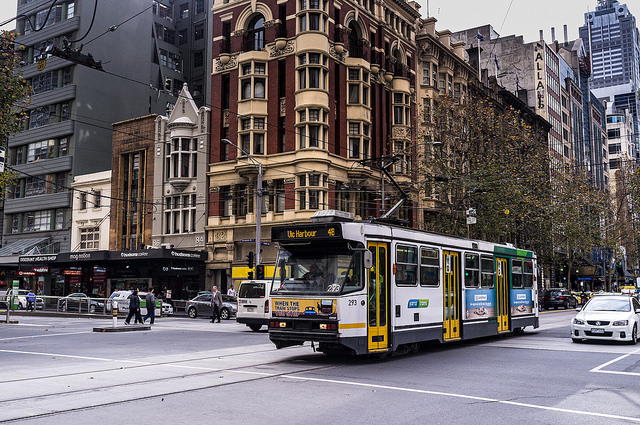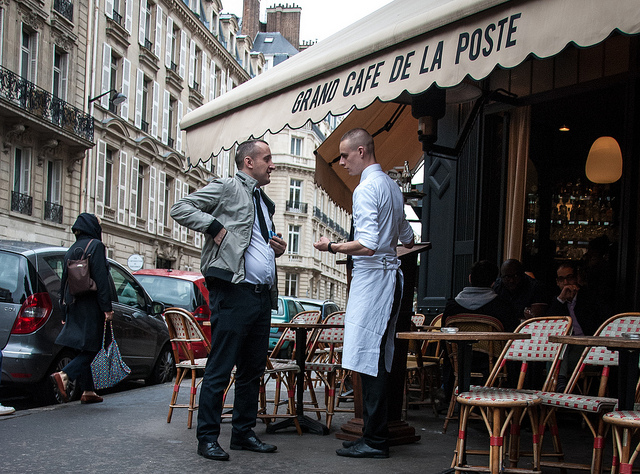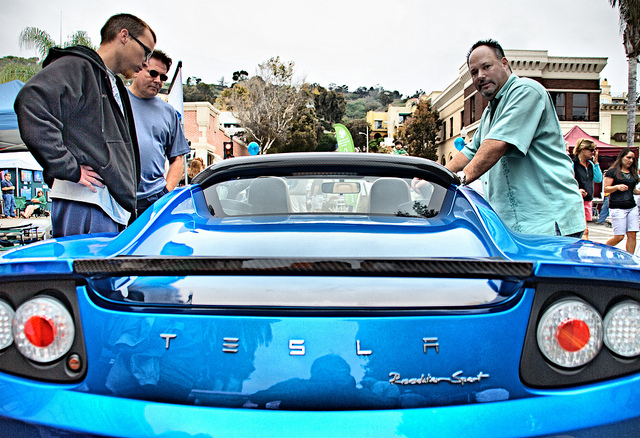Unlock the Magic in Your Story Now
Get the Free 20 questions to Ask Before Launching Your Idea workbook when you sign up for occasional updates.
Get the Free 20 questions to Ask Before Launching Your Idea workbook when you sign up for occasional updates.
Articles filed in: Strategy
Patient Growth
 My trusty blender died a couple of weeks ago, or rather I killed the thing with overwork and by overloading. The new blender had a lot to live up to. On the advice of the sales assistant I bought the most powerful one on the market, but was still frustrated by its performance. Why wouldn’t this thing respond the way I wanted it to when I filled it to the brim? It’s taken some trial and error to work out that if I want to optimise the blender’s performance then patience is all that’s required.
My trusty blender died a couple of weeks ago, or rather I killed the thing with overwork and by overloading. The new blender had a lot to live up to. On the advice of the sales assistant I bought the most powerful one on the market, but was still frustrated by its performance. Why wouldn’t this thing respond the way I wanted it to when I filled it to the brim? It’s taken some trial and error to work out that if I want to optimise the blender’s performance then patience is all that’s required.
I have two choices. I can take the shortcut, overfill the bowl and become frustrated when the motor can’t process the load, or I can gradually feed vegetables into it and watch as they are pulped in seconds.
In business as in life, we seek out what we think is the quickest route to the outcome we want, then we get frustrated when things don’t work out as we hoped they would. When our expectations don’t match our capabilities, or the customer’s worldview, or the marketplace’s readiness, we push harder—trying to hurry things along before it’s time.
Sometimes what we need is more patience and more time to work out how to turn aspirations into outcomes. Slow and steady is often the quickest way to get to where we want to go.
Image by Steven Depolo.
The Value Of Challenging Our Assumptions
 It’s 6am, and a passer-by bends down to leave a couple of bananas next to the homeless guy who is turning over in his sleeping bag in the doorway of 7-Eleven. When he wakes, he gathers his things and the few coins in his tin. He drops the fruit in a nearby bin and heads into the city.
It’s 6am, and a passer-by bends down to leave a couple of bananas next to the homeless guy who is turning over in his sleeping bag in the doorway of 7-Eleven. When he wakes, he gathers his things and the few coins in his tin. He drops the fruit in a nearby bin and heads into the city.
The passer-by made an assumption about how best to help. But despite her good intentions their worldviews didn’t align.
This misalignment between giver and receiver, provider and user, business and customer occurs all too often. It happens when our understanding of the people we serve falls short—when we’re more focused on our story than we are on theirs.
We can challenge our assumptions about our customer’s wants and needs with knowledge, proof and truth. We seek those out by noticing, questioning, and understanding.
How are you doing that in your business?
Image by Gary Knight.
Because We Can
filed in Storytelling, Strategy
 It’s a brisk Autumn Monday. The city’s lunchtime trams are busy. As we turn into Collins Street the tram driver begins an unscripted dialogue.
It’s a brisk Autumn Monday. The city’s lunchtime trams are busy. As we turn into Collins Street the tram driver begins an unscripted dialogue.
He tells us that we’re at “the Paris end” of Collins street in the world’s most liveable city, reminding us that this is “no flash in the pan” because Melbourne has been awarded the accolade five times. At each stop he mentions landmarks and points of interest. He draws our attention to the “blue sky, fluffy white clouds, birds singing and trams dinging”.
“It doesn’t get much better than this ladies and gentlemen.” he says.
“If only Essendon had won on the weekend.”
And the day is brightened for tens of people in that ordinary moment.
Here is a guy without a script, a rulebook, or permission of any kind doing meaningful work.
Not because it’s in his job description, his boss is watching, or for a financial incentive—but because he can.
It’s an oppotunity most of us are lucky to have. We should take it.
Image by Stephen Beaumont.
5 Questions To Consider Before Spending Your Marketing Budget
 A colleague recently asked my advice about a five-figure advertising spend he was contemplating. Should he or shouldn’t he?
A colleague recently asked my advice about a five-figure advertising spend he was contemplating. Should he or shouldn’t he?
We mapped out the risks vs. the rewards and also discussed alternatives.
It turned out that he needed to ask a different set of questions entirely.
5 Questions To Ask Before Allocating Marketing Resources
1. What’s the best outcome you can hope to achieve as a result of employing this strategy?
2. What does failure look like?
3. Why this medium and not that one?
4. Why do you believe this is the best use of your marketing resources?
5. How could you delight existing customers by devoting these resources to deepening connections with them instead?
Just because it looks and feels like marketing doesn’t mean it’s the best option.
And 3 Action Items
1. If you’re going to read just one post about marketing from Seth Godin, read First ten.
2. Then read Kevin Kelly’s post 1,000 True Fans—still relevant today.
3. Your About Page is probably the most overlooked marketing opportunity you have.
The About Page Guide will help you to write an About Me Page that works for you.
The opportunities for growth are closer than you think.
Image by Angelo Antonelli.
Beyond The Point Of Sale
 Many marketing strategies focus on the point of sale.
Many marketing strategies focus on the point of sale.
Most great brand stories focus on what happens before and after the point of sale.
We win by considering who the customer is, and helping him to become who he wants to be.
This happens by understanding his story beyond the point of sale.
Image by Linh Nguyen.
Optimising For Customer Delight And The Peak-End Rule
 Jody and Jim (not their real names) run a small web design studio. Their initial pricing strategy was to keep base prices low, putting time caps on every deliverable during the website design and build. New clients were informed about this policy up front. Things like design time and content population were included in the original quote. If the project became more complex or the client wanted changes, the design team let them know that they would incur an extra charge and got their approval to go ahead.
Jody and Jim (not their real names) run a small web design studio. Their initial pricing strategy was to keep base prices low, putting time caps on every deliverable during the website design and build. New clients were informed about this policy up front. Things like design time and content population were included in the original quote. If the project became more complex or the client wanted changes, the design team let them know that they would incur an extra charge and got their approval to go ahead.
Despite this, when clients were presented with a ‘higher than expected’ bill at the end of the project they were very annoyed. They were thrilled with their website but not at all happy with Jody and Jim. The result was unhappy clients, negative reviews and fewer word of mouth referrals.
Something had to change. The priority was to leave every client delighted at the end of the experience. A smart move on Jody and Jim’s part when you consider peak-end rule.
The team decided to simply increase prices to reflect the fact that every single web design project goes out of scope. Now at the end of a job, the client is delighted with both their website and the company—all as a direct result of this firm pricing strategy.
The ability to truly empathise with the customer along every step of their experience is what separates great businesses from good ones. How are you doing that?
Image by Leo Hidalgo..
The Importance Of Happy Endings
 When we’re serving customers we tend to front-load our effort. Hotel reception staff are well-versed in making a great impression when the guest checks in. Good waiters quickly seat new diners and take orders promptly. Retailers station greeters at the store entrance to welcome and orient new customers.
When we’re serving customers we tend to front-load our effort. Hotel reception staff are well-versed in making a great impression when the guest checks in. Good waiters quickly seat new diners and take orders promptly. Retailers station greeters at the store entrance to welcome and orient new customers.
The same is also true for marketing. We expend a lot of effort to attract customers, committing a significant chunk of our resources to getting them through the door.
The trouble is that customers don’t rate the quality of their overall experience by what happens moment to moment, they judge it by what happened at its peak and at the end. This is why as business leaders and marketers we need to pay attention to the peak-end rule.
How you say goodbye is just, if not more important, as how you said hello.
Image by Stijn Nieuwendijk.
The Facts Are Overrated
 Since the new Model 3 Tesla was unveiled just over two weeks ago 400,000 people (who have never test driven or sat in one) have paid $1000 to place an order. And while the price of this latest model makes it accessible to more people it’s clearly not what’s driving these organic sales.
Since the new Model 3 Tesla was unveiled just over two weeks ago 400,000 people (who have never test driven or sat in one) have paid $1000 to place an order. And while the price of this latest model makes it accessible to more people it’s clearly not what’s driving these organic sales.
Think about the last significant purchase you made—a car, kitchen appliance or mobile phone. How deeply did you dive into the details about the features and functionality before you decided which product to buy? When were you last persuaded by facts?
Now think about how you differentiate your products and services. Do you default to competing on features, benefits and price alone? What’s at the heart of your story?
Yes, the facts had better stack up, but they’re not what’s driving your customer’s decisions.
Image by Wendell.
Your Story Drives Behaviour
filed in Storytelling, Strategy
 Jackie is a gifted web designer. Her inbox is full of enquiries from people who want to work with her. She loves what she does, but she gets worn down by clients asking for a discount on her already reasonable rates. This behaviour not only affects Jackie’s bottom line and the number of clients she must take on to make a living, it also leaves her feeling demoralised.
Jackie is a gifted web designer. Her inbox is full of enquiries from people who want to work with her. She loves what she does, but she gets worn down by clients asking for a discount on her already reasonable rates. This behaviour not only affects Jackie’s bottom line and the number of clients she must take on to make a living, it also leaves her feeling demoralised.
When clients repeatedly ask for discounts.
When your boss emails every weekend.
When staff continually show up late for meetings.
When you don’t feel valued, it’s tempting to blame the people who don’t value you.
Start by looking at your actions and responses—the things that might be giving this behaviour oxygen. Think about what could be triggering the behaviour, then own the way you want people to respond. You have a responsibility to create the story that elicits the reactions and responses you want. How are you framing your scarcity?
Image by dawolf.
 Have you noticed that more email marketers are trying to attract your attention at the weekend? Many weekly digests now hit inboxes outside office hours in the hope of getting traction when people are less busy.
Have you noticed that more email marketers are trying to attract your attention at the weekend? Many weekly digests now hit inboxes outside office hours in the hope of getting traction when people are less busy.